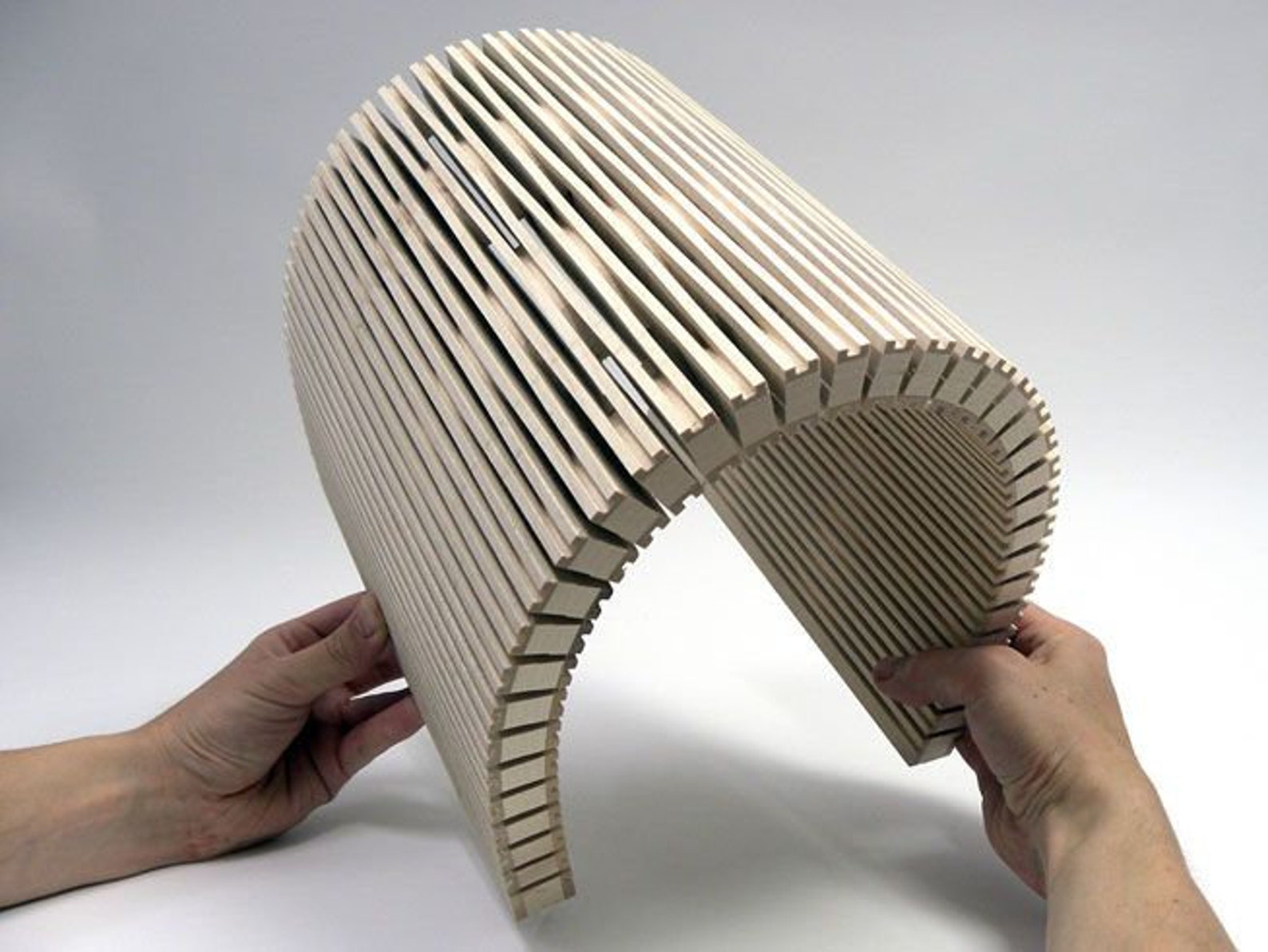

Taking note of the work in the above links, I chose to try several different approaches to the design of the hinges: parallel lines, similar to those that appear to make up the design of the Snijlab notepad cover, and parallel rectangles, similar to those detailed in the two links above. Interesting reading on the layout and design of these hinges, particularly the length and width of cuts can be found in these links: Thus it seems logical to sketch out several different designs for a physical test, before choosing the optimal design for our Pi enclosure. By changing the spacing between these parallel lines, it appears that we will change the flexibility and strength of the hinge.

Looking at photographs of the laser cut living hinge, it is apparent that the design is made up of a series of parallel lines, overlapping each other rather like brickwork. In this post, we will design several versions of the living hinge within DesignSpark Mechanical (herein referred to as DSM), before making a simple case enclosure for the Raspberry Pi. Whilst laser cut living hinges can be of limited durability, they are interesting and provide a somewhat elegant solution for some designs. I first came across this technique with Snijlab laser cut notepad cover, and have since employed it with good effect in several projects. It is also possible to make living hinges from thicker sheet material with a laser cutter. These are commonly found on disposable or low-cost injection moulded plastic parts, one example is the hinged clips that are found on some designs of food storage boxes, shown below. Adding flexibility to sheet material with DesignSpark MechanicalĪ living hinge is a flexible joint made from the same material as the parts that it joins together.


 0 kommentar(er)
0 kommentar(er)
